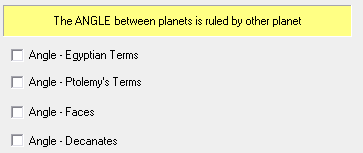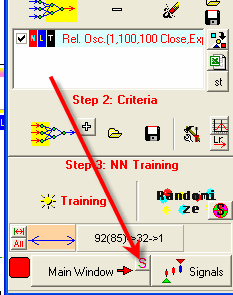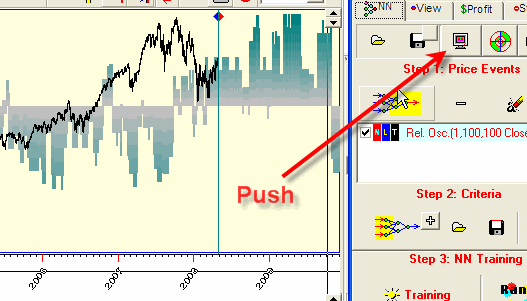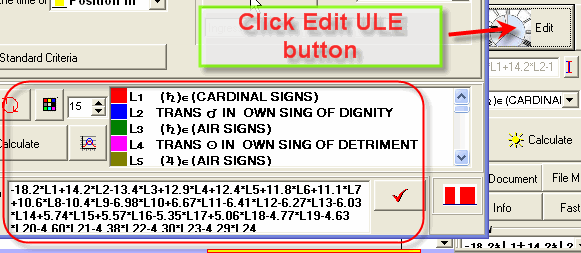
Astrological cycle based models in Timing Solution
written by Sergey Tarassov
Overview
This article is devoted to pure astrological models presented in Timing Solution. We have discussed already two other types of models used in the program - based on math methods and based on astronomy. Now it is time to look at totally different models - models based on astrological phenomena. This approach is very interesting, and the most interesting part is that today we can combine thousands years of astrological wisdom together with the newest math technologies (like Neural Network modeling) and hardware abilities (i.e. computers, their memory, speed, etc.). However, before any discussion, I would like to explain the main difference between astrological and astronomical/math based cycles.
Do you have any idea as to what would a mathematician and an astrologer think when somebody tells them about the Sun cycle?
Mathematician:
He sees it as the regular cycle with the period of 365.25 days. He may discuss
how many figures are after the point. Anyways, immediately the sinus curve appears
in his brain, something like this:

The mathematician likes this curve very much, and he tends to describe the whole Universe as the Great Combination of these Harmonic waves.
Astrologer:
Astrologer sees a totally different picture. He sees Zodiac, either as a circle
or something like this:

This picture demonstrates the movement of the Sun through 12 signs of Zodiac. Each year, on March 21, the Sun ingresses the sign of Aries; it is there for a month, and during that month the Sun's quality is colored by Aries sign. The astrologer also may use the phrases like this: "The Sun likes this sign because it exalts there". Practically it means that the Ecliptic is divided into 12 equal sectors (signs of Zodiac), and the Sun "feels" itself differently in each of these sectors. For example, in Leo (middle of summer) the Sun feels itself very good, like being home (Leo is a sign ruled by the Sun, or the sign of the Sun's dignity). When the Sun ingresses Aries, it feels itself there very good as well, like staying in the house of a very good friend (in Aries the Sun exalts). To continue the analogy, there are some places where the Sun feels itself not comfortable. One of these places is Libra (October), the Sun's fall place. Another is Aquarius (at the end of winter), a place of the Sun's detriment - the Sun is weak there. The same picture comes to the astrologer's mind when he thinks about other planets, they also feel themselves differently in different places of Zodiac.
This approach came from ancient times, astrology goes back for several thousands years! The ancient astrologers observed the celestial bodies and simply compared what had happened on the Earth and on the Sky. You can get in touch with their feelings if you try to watch the Moon in different signs of Zodiac within several years; simply memorize your attitude during these 2-days intervals, year by year.
Now you see the difference between the mathematician's and the astrologer's view on Annual cycle. The mathematician sees a smooth wave, and the difference between 359th and 1st degree of Ecliptic coordinates is not a big thing for him. For astrologer, there is the difference between the two, a big difference: the Sun in Pieces and the Sun in Aries gives to us a totally different astrological situation and results in two totally different outcomes. The astrologer takes into account not only quantities, but qualities as well.
There are more places in Zodiac associated with specific planets. One kind of them is terms. This approach is based on the idea of rulership. The Zodiac is divided on 60 non equal sectors, and each sector is ruled by some planet. For example, the sector 0-6 degrees of Aries is ruled by Jupiter. Next segment is wider, 6-14 degrees of Aries, and it is ruled by Venus. (Actually there are two systems of terms - Egyptian and Ptolemy; here we speak about Ptolemy system).
I like this table with planetary dignities from this website http://www.astrologycom.com/dignities.html

The classical astrology says that the planet becomes stronger (i.e., its qualities are more obvious) when it moves through its own term. (It is a hint for a good model, and I cannot imagine how this model could be done manually, without a computer. Too many calculations...)
Other division of the Zodiac is faces and decanates. The Zodiac is divided here on 36 equal segments, each segment has 10 degrees. And each segment is ruled by some planet.
The faces and decanates use different planetary rulers. The face is more ancient system based on so called Chaldean order (our 7 days of the week come from this system).
I believe that you have now enough reasons to try astrology based models. (I did not mention here aspects and midpoints for a reason. They are rather recent additions to astrology. They combine astrology and astronomy, and nowadays there is a tendency to more astronomy there. Remember the essential and accidental dignities; you will see my point.)
Technology
There is one more thing to tell you. I would like to share with you my experience in regards to applying astrology for stock market. When I started to develop a trading system based on astrological factors, my first attempt was to use aspects. It was a very appealing idea - turning points would occur when important aspects culminate. But the results were not good. Then I tried to use middle points, planetary pictures etc. The models became more and more complicated while the results were not good at all. Finally I recognized the obvious truth that we have to start with the most important factors, and in Classical Astrology this truth is essential dignities (related to planetary positions and planetary qualities; as the source of information, see Bonatti, Lilly's books).
Now we are ready to discuss the technology; it is time to apply this ancient knowledge to stock market forecast. The time is right because we have now modern computers that are able to conduct in seconds the calculations that would take many years of hard work for the ancient astrologer.
Running Neural Network module, set this forecast model:

You will get the window where you can define the parameters of forecast models:

These controls allow you to analyze the position of the planets in different places of Zodiac, it can be Dignity, Detriment, Exaltation, Fall, Terms, Faces and Decanates:

Thus the program will find how the position of the planets in different Zodiacal places affects the stock market.
This option ![]() allows to research different divisions of the Zodiac. Take it as an analysis of
different Zodiacal symmetries.
allows to research different divisions of the Zodiac. Take it as an analysis of
different Zodiacal symmetries.
As an example, consider the Sun in one of the triplicities. Let it be the event "The Sun is in Fire signs". This event involves three signs - Aries, Leo, and Sagittarius. The diagram shows them as red-colored sectors:

The example of cardinality event is "The Sun is in Cardinal sign", here it is:

The example of hemisphere event is "The Sun is in upper hemisphere". It looks:

Try to create the model setting this option only:

You will see how the ancient techniques work. Try also to use Geo and Geo+Helio combinations.
Here you can set different Zodiacs. Use "In Mundo" Zodiac for intraday data. It is obvious that ancient astrologers worked with Geo only:

Here you can set the scheme of rulership:

If you choose the "Own rulership", the program will analyze the positions of the planets when they are in places of their dignities, like "The Sun moves through its own sign of exaltation", or "Jupiter moves through Ptolemy Term that is ruled by Jupiter". If you choose "Mutual rulership", the more advanced events that involve two planets will be available for you, like: "The Sun moves through Jupiter's sign of exaltation", or "Jupiter moves through Ptolemy Term that is ruled by Venus". I highly recommend to try this option.
This is a totally experimental feature:

It allows to research the angle between the planets. In other words the Zodiacal position is defined as an angle between planets.
The next very important parameter that I recommend to vary is the amount of price bars that is used to train Neural Network:

I recommend to use this model for daily price history.
Usually I start to work using all available data (before Learning Border Cursor) to train Neural Net ("All" button). After that I use 1000 bars (4 years = Presidential cycle), then 2000 bars and 5000 bars.
Clicking "Train" button

we tell the program to calculate the projection line based on these events.
Ancient + Modern Technology
You definitely hear the statements like this (from website http://en.wikipedia.org/wiki/Triplicity):
In medieval systems of astrology, each essential dignity was given a different weight. Domicile rulers were given 5 points of weight; exaltation rulers were given 4 points; and triplicity rulers were assigned 3 points of weight. This gives some idea of how much power medieval astrologers accorded to each essential dignity. [7]
In other words, we weight planetary positions in attempt to evaluate their rank in the situation. This ancient technique fits well to the modern
technology. I have download Dow Jones Industrial index data for the last 18 years. Then I ran Neural Net module using the model based on astrological events and trained it.
After that I click this button:

Here you can see the ranked list of events for this model:

The first item here is "Saturn in Cardinal signs", this is the strongest term in this model. The second strong is "Mars is in own sign of dignity". Next is "Saturn in Air signs", etc.
Now highlight %X first the strongest events there (push "Shift" key and select these items). I highlighted first 24 events.
Click this button  to put these events into Universal; Language of Events (ULE) module. You may like to hide Neural Network results panel now; push this button:
to put these events into Universal; Language of Events (ULE) module. You may like to hide Neural Network results panel now; push this button:

You will get the projection line based on these 24 astrological events.
To see inside of this model, click "Edit ULE" button:

Simply read this formula as it is. To forecast Dow, we need to set these weights for astrological events:
| Event | Weight |
| Saturn in Cardinal signs (designated as L1) | -18.2 |
| Mars in own sign of dignity (designated as L2) | +14.2 |
| Saturn in AIR signs (designated as L3) | -13.4 |
etc.